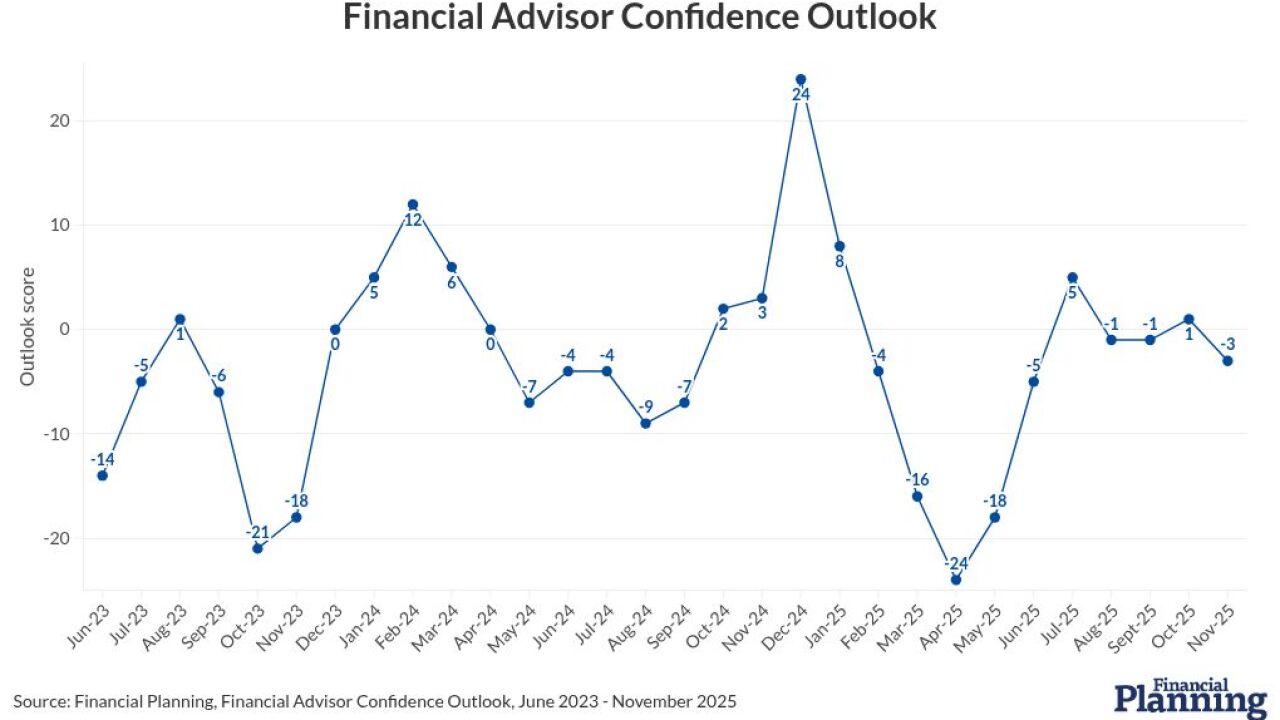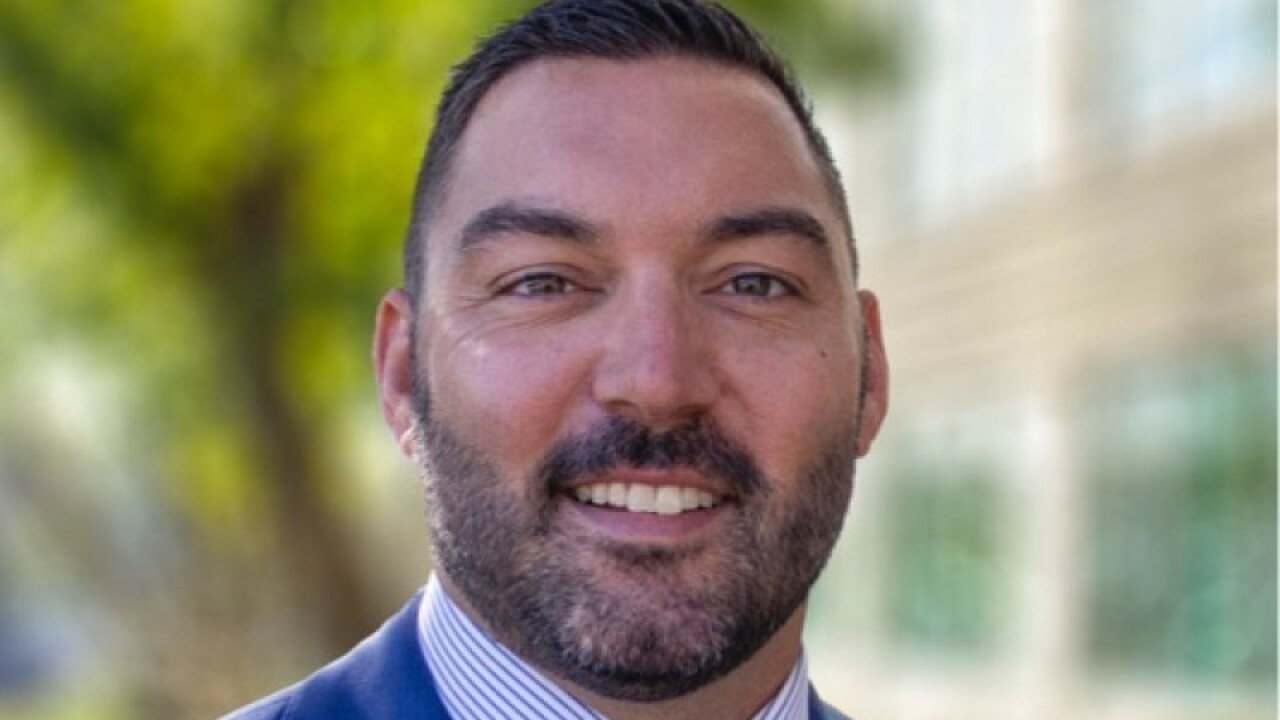If the asset management industry is looking for some immediate good news, it can be found in recent ETF trends.
The ETF market now is worth over $3 trillion, with nearly 7,000 funds available, according to ETFGI. U.S. ETFs have taken in more than $173 billion this year, Bloomberg News reports. And a new study from Brown Brothers Harriman notes stronger interest among investors even in factor-based ETFs.
But the popularity of ETFs has been borne on a drain on the mutual fund industry. Mutual funds have seen $130 billion in outflows this year alone, Morningstar reports.
That contrast frames the trends for the industry going into 2017; a tug-of-war between positive developments against several challenges: increased fee pressures in products, cost pressures in distribution, slow organic growth and the weight of regulatory changes brought by implementation of the DoL fiduciary rule.
"2017 will be a redefining year in the financial industry," says Sean Hollingshead, director of the investment advisor division at CLS Investments. "Regulation, digital technology advancement, and the lowest cost money management options we've seen in decades will shape industry trends throughout the coming year. trends throughout the coming year."
The challenges loom large - industry consultants Casey Quirk predict in a new study accelerated consolidation as median profit margins for asset managers will drop from 34% to 28% in five years.
"Asset managers face the strongest headwinds yet as an industry," notes Ben Phillips, a principal at Casey Quirk.
Despite this expected constriction in the industry as a whole, a number of leaders see opportunities in employing technology, innovative products and even strategy toward regulation.
TECHNOLOGY ESSENTIAL
Firms have to smartly employ technology to reinforce the value of their management and gain more traction for their offerings, says James Waldinger, founder and CEO of New York-based investment platform Artivest.
"Across the entire adviser-intermediated system, there is tremendous opportunity for advisers to embrace the new technologies to solve for inefficiencies, and we see technology playing a greater role in the distribution of investments in 2017 and beyond," Waldinger says.
His firm conducted a survey that found financial advisers consider a lack of access to quality funds the primary hurdle standing in the way of greater adoption of alternatives.
"Advisers who hesitate to incorporate these investments in their practice cite as the reason for their hesitation outdated and disjointed systems for qualifying clients, procuring and completing documents and monitoring the resulting investments."
Hollinghead says there is now an opportunity for firms to capitalize on what he calls a "massive overreaction to the emergence of robo advisers."
"The advantage of the robo hysteria is that investors now have better technology and a more cost conscious and fee transparent investment universe. The trend will continue into 2017 as firms begin to bridge the gap between true robo advisers and traditional advisory business."
Financial technology and the subsequent adaptation will bring new opportunities and more streamlined investment options for firms and their clients, Hollinghead says.
"The pending changes should trend toward better transparency, cost reduction, and technology adaptation."
PureFunds CEO Andrew Chanin adds the asset management industry should be paying close attention to the interest garnered by the fintech space.
"Not only from the economic potential of integrating digital technology into the financial industry, but also from continued investor appetite for paradigm-changing technologies," he says.
MARKET TIMING
Another technological development that could play out is an increased engagement by managers in market timing strategies, says Rick Anderson, chief investment officer at Chicago-based Hull Investments.
"There are new sources of data relevant to financial markets, for example, computer programs can monitor and analyze comments on social networks in real time," Anderson says.
"Second, new statistical techniques and cheap computer power allow analysts to discover subtle relationships that can be used to forecast financial markets. Finally, academic research over the past decade suggests that certain factors can be used to forecast financial markets."
That could result in a new category of alternative market strategies, he says.
"Many of them may well offer their products to well-heeled investors willing to pay high fees."
It's a time for product exploration, says Reality Shares CEO Eric Ervin.
"ETF managers are continuously testing new strategies in the hopes of achieving exposure to alpha-generating segments of the equity market, bringing ETFs of the future from theory to reality."
FIDUCIARY IMPACT
The coming year will be a transitional one for every firm as they adjust to the DoL rule, notes Cetera CEO Robert Moore. The model for financial advice "is primed and ready for change. ... We don't view that as a threat to the industry. We view that as an exciting thing and a seismic shift."
Advisers are very concerned about compliance issues, fee compression and technology investments going into 2017, according to a new survey by SEI Advisor Nework, mirroring the concerns of asset management firms.
There are steps that firms can take, according to consultants at Casey Quirk, which estimates that 81% of the $44 trillion in U.S. retail assets will be subject to a fiduciary standard by 2018.
Much of that effort should be focused on streamlining operations, the firm suggests. "State-of-the-art distribution technology, investment advice that appeals to consumers, and better use of data will help successful asset managers secure their market positions," Quirk's Phillips says.





